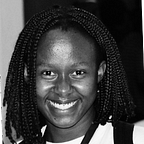Gestalt Psychology as applied in Product Design
The 5 Principles of grouping that govern human perception
This article is structured as follows:
- What is Gestalt Psychology
- Principles of Gestalt Psychology
- Applications in Product Design
- Other areas of application
What is Gestalt Psychology
Psychology is the branch of science that aims to understand how the brain works.
Gestalt is a German word that roughly translates to “configuration, shape, form, or the whole” or “the way things are put together to form a whole object”.
Gestalt Psychology specifically, is the school of thought explaining how the human brain perceives objects in its immediate environment. It suggests that we perceive objects in our environment not as individual components, but as part of a greater, more complex whole.
The Law of Simplicity or Law of Prägnanz
“Every stimulus is perceived in its simplest form.”
“The whole is greater than the sum of its parts.”
The earliest record of this school of thought was first made by Max Wertheimer, who observed what he called the phi phenomenon while watching alternating lights on a railway signal.
The phi phenomenon is an optical illusion where two stationary objects seem to move if they are shown appearing and disappearing in rapid succession. In other words, we perceive movement where there is none.
From this he then concluded that we perceive things by seeing the whole perception, not by understanding individual parts.
The Principles of Gestalt
Foundational Principle:
Prägnanz: The human brain naturally perceives things in their simplest form or organisation.
Within this lies 5 other principles that govern human perception.
- Similarity: The human brain naturally groups similar items together based on elements like color, size, or orientation.
- Proximity: Objects near each other tend to be viewed as a group.
- Continuity/Simplicity: Elements arranged on a line or curve are perceived as related to each other, while elements that are not on the line or curve are seen as separate.
- Closure: Elements that form a closed object will be perceived as a group. The brain will even fill in missing information to create closure in order to make sense of an object.
- Common region/Good Figure: The human brain tends to group objects together if they’re located in the same general area.
In recent years others have been added to the list such as;
- Symmetry and Order
- Common Fate: Objects that appear to be going in the same direction are perceived as related
Gestalt Psychology in Product Design
Psychology plays a major role in how users interact with products. Gestalt principles can be applied to ensure users get a clear and delightful experience.
Since the inception of these principles in the 1900s, designers have been leveraging the human brain’s perception of things like contrast, color, symmetry, repetition, and proportion to elevate the impact of their work.
The usage of these principles has resulted in the incorporation of various design concepts into them. These are;
- Figure-ground relationship: This is more commonly referred to as “Negative Space.” The contrast between a focal object (like a word, phrase, or image) and the white space around it.
- Visual hierarchy: This is where objects are organised and displayed in order of importance. This ensures that the most important objects (words or images) attract the users’ attention first.
- Associativity: This concept builds on the principle of proximity to determine where they place important objects, including text elements like headlines, captions, and lists.
Other Applications
1. Art
2. Photography
3. Architecture (Law of Closure)
As you can see from the images above, Gestalt psychology continues to manifest itself in the works of many artists and designers to create amazing innovative experiences.
